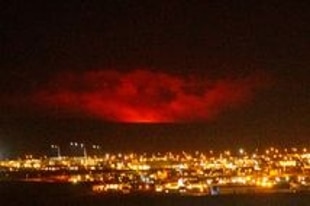Share
March 20, 2021 A new volcanic eruption is underway in the land of ice and fire, Iceland.
Part of the Krysuvik volcanic system, the crater is located south of Mount Fagradalsfjall, on the Reykjanes peninsula, in the southwest of the island, about 40 kilometers from the capital Reykjavik.
Thousands of earthquakes had been recorded in recent weeks, but a 5.7 magnitude quake was recorded on February 24 on the outskirts of Reykjavik, followed by more than 50,000 minor tremors, the highest number since recordings began. digital in 1991. The tremors, probably due to the movement of magma under the peninsula and were considered a prelude to a volcanic eruption around Mount Keilir.
The eruption area is uninhabited and there should be no danger.
Volcanic eruptions in the region are known as effusive eruptions, in which lava constantly flows from the ground, as opposed to explosive ones that spew clouds of ash high into the sky.
Iceland's Keflavik International Airport is only a few kilometers away, and the area has been banned from flying.
"The code is red, but very little turbulence is seen on the seismometers," the
Icelandic Meteorological Office
, which monitors seismic activity, tweeted.
A new video of the eruption at Geldingardalur valley in Reykjanes peninsula.
Taken from the Coast Guard helicopter.
#Reykjanes #Eruption #Fagradalsfjall pic.twitter.com/B862heMzQL
- Icelandic Meteorological Office - IMO (@Vedurstofan) March 19, 2021
The Krysuvik volcanic system has been inactive for the past 900 years, according to the meteorological office, while the last eruption on the Reykjanes Peninsula dates back almost 800 years to 1240.

